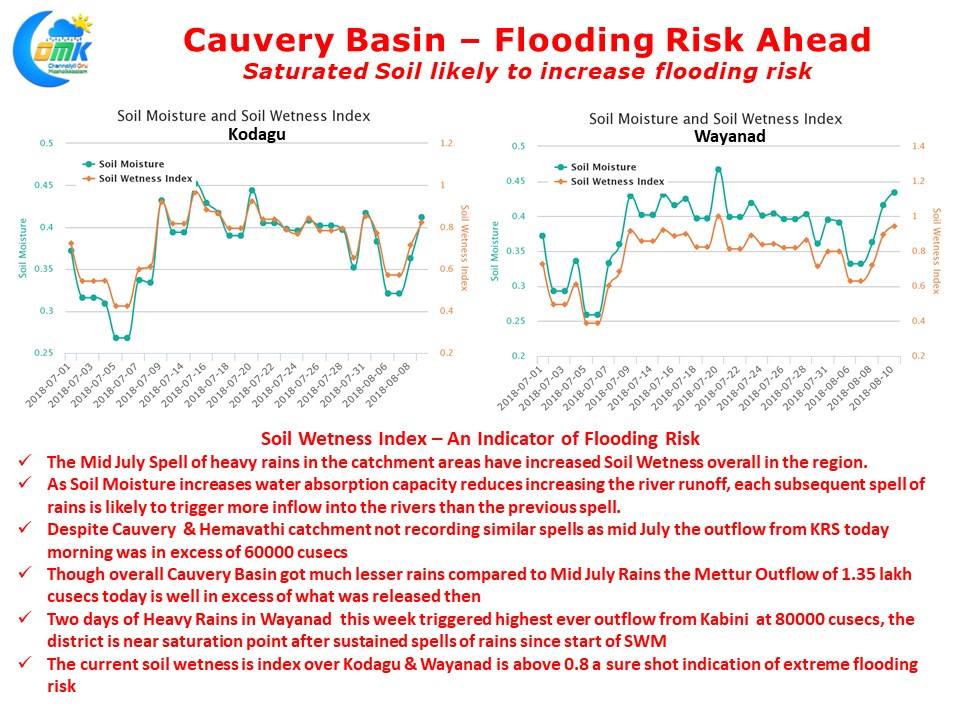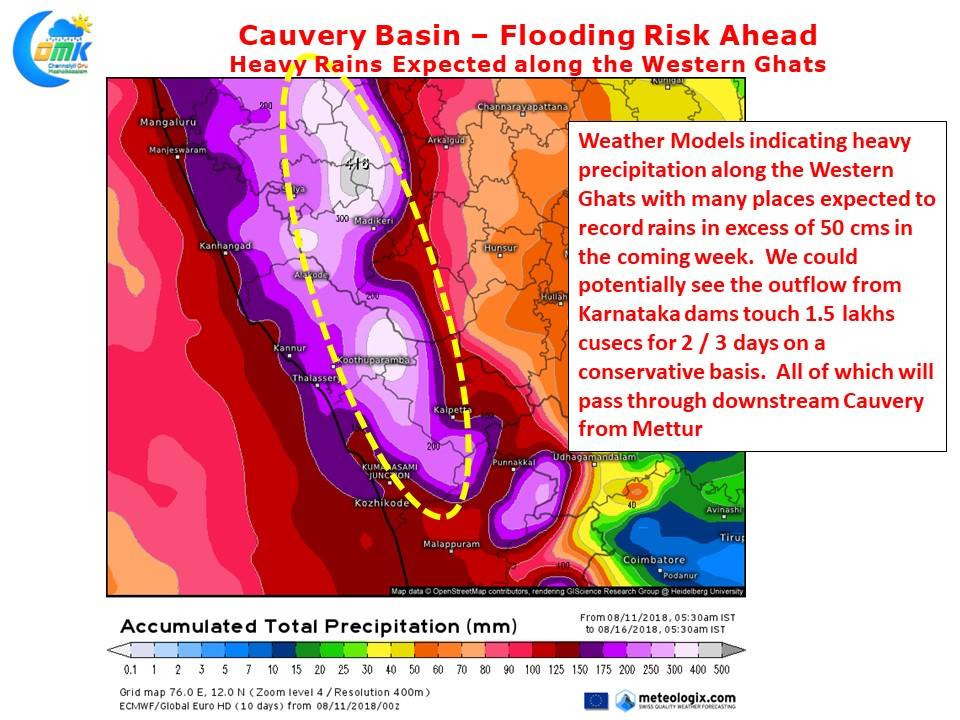On a day when the Cauvery Basin dams outflow in Karnataka accumulate to nearly 1.40 lakh cusecs it becomes necessary to think slightly further ahead on what could turn out to be testing times for all those who are living along the Cauvery Basin right from Wayanad till Delta districts. The outflow from Stanley reservoir at the time of updating this post has been stepped up to 1.25 lakh cusecs which is higher than even the outflow during the second fortnight of July when inflows into the dams across Cauvery Basin swelled on the back of a very strong & Vigorous monsoon spell sustained over nearly a week in the Western Ghats. Despite the monsoon not seeing vigorous conditions over West Coast how did Cauvery Basin see such huge inflows into the dams? The answer to that question will have to wait a short while.
Parts of Wayanad recorded extreme rainfall for a couple of days last week while Kodagu recorded moderate to heavy rainfall at many places simultaneously. This spell of rains coincided with the low pressure area in North bay activating the offshore trough along Coastal Kerala & Karnataka. Numerical Models indicate the next active phase of monsoon is round the corner with rains once again picking up in the catchment areas of Cauvery Basin from tomorrow evening / Monday morning. The accumulated precipitation charts until next Friday says many places in Kodagu, Wayanad dts likely to receive rains in excess of 50 cms. We will have to keep in mind the actual rainfall quiet often is nearly double of what is estimated for places in the Ghats of Kerala & Karnataka.
With this we will try to answer the question asked earlier. The answer lies in increasing Soil Moisture as the Monsoon Express Chugs along. A look at the Soil Wetness Time Series for Wayanad & Kodagu will show how during the month of July the Soil Wetness Index starts to climb gradually peaking during the huge spell around mid July. With each spell of rain the soil wetness increases thereby reducing the capacity of the soil to absorb water. When the water absorption gets reduced the run off into river increases thereby exponentially increasing the probability of flooding. As things stand we could possibly see the Cauvery Basin carry water flow of around 2 lakh cusecs once again after October 2005 when Mettur reservoir recorded an inflow of 2,15,162 cusecs and an outflow of 2,14,919 cusecs.




